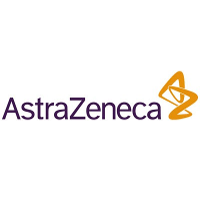NCCN Guidelines Osimertinib (TAGRISSO) Upate

Osimertinib (TAGRISSO®) is now the only preferred first-line EGFR TKI in the NCCN Clinical Practice Guidelines In Oncology (NCCN Guidelines®).
I am excited to share with you that first-line Osimertinib (TAGRISSO®) has been elevated to preferred status in the NCCN Guidelines®, for sensitizing EGFR mutation-positive metastatic NSCLC.
Osimertinib’s (TAGRISSO®) preferred status among all Category 1 recommended EGFR TKI options, is the first time the National Comprehensive Cancer Network® (NCCN®) has given this status in the EGFR TKI class.1
Osimertinib (TAGRISSO®) is indicated for the first-line treatment of patients with metastatic non-small cell lung cancer (NSCLC) whose tumors have epidermal growth factor receptor (EGFR) exon 19 deletions or exon 21 L858R mutations, as detected by an FDA-approved test.
I wanted to ensure that you were aware of these important changes. Please reach out if you have questions or would like to discuss.
Please let me know the day and time that works best for you, so I may review this important update.
IMPORTANT SAFETY INFORMATION
There are no contraindications for TAGRISSO.
Interstitial lung disease (ILD)/pneumonitis occurred in 3.9% of the 1142 TAGRISSO-treated patients; 0.4% of cases were fatal. Withhold TAGRISSO and promptly investigate for ILD in patients who present with worsening of respiratory symptoms which may be indicative of ILD (eg, dyspnea, cough and fever). Permanently discontinue TAGRISSO if ILD is confirmed.
Heart rate-corrected QT (QTc) interval prolongation occurred in TAGRISSO-treated patients. Of the 1142 TAGRISSO-treated patients in clinical trials, 0.9% were found to have a QTc > 500 msec, and 3.6% of patients had an increase from baseline QTc > 60 msec. No QTc-related arrhythmias were reported. Conduct periodic monitoring with ECGs and electrolytes in patients with congenital long QTc syndrome, congestive heart failure, electrolyte abnormalities, or those who are taking medications known to prolong the QTc interval. Permanently discontinue TAGRISSO in patients who develop QTc interval prolongation with signs/symptoms of life-threatening arrhythmia.
Cardiomyopathy occurred in 2.6% of the 1142 TAGRISSO-treated patients; 0.1% of cardiomyopathy cases were fatal. A decline in left ventricular ejection fraction (LVEF) ≥10% from baseline and to <50% LVEF occurred in 3.9% of 908 patients who had baseline and at least one follow-up LVEF assessment. Conduct cardiac monitoring, including assessment of LVEF at baseline and during treatment, in patients with cardiac risk factors. Assess LVEF in patients who develop relevant cardiac signs or symptoms during treatment. For symptomatic congestive heart failure, permanently discontinue TAGRISSO.
Keratitis was reported in 0.7% of 1142 patients treated with TAGRISSO in clinical trials. Promptly refer patients with signs and symptoms suggestive of keratitis (such as eye inflammation, lacrimation, light sensitivity, blurred vision, eye pain and/or red eye) to an ophthalmologist.
Verify pregnancy status of females of reproductive potential prior to initiating TAGRISSO. Advise pregnant women of the potential risk to a fetus. Advise females of reproductive potential to use effective contraception during treatment with TAGRISSO and for 6 weeks after the final dose. Advise males with female partners of reproductive potential to use effective contraception for 4 months after the final dose.
Most common adverse reactions (≥20%) were diarrhea, rash, dry skin, nail toxicity, stomatitis, fatigue and decreased appetite.
Please see the complete Prescribing Information including Patient information.

